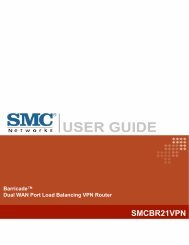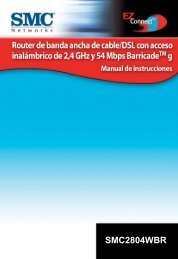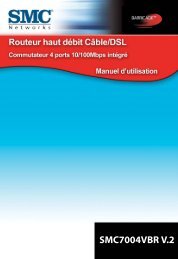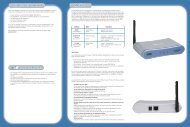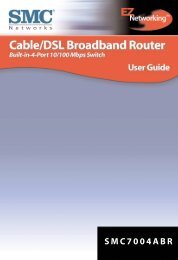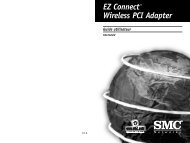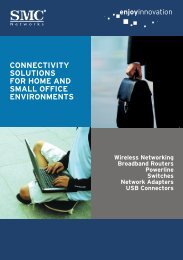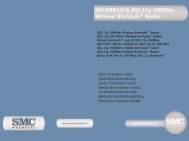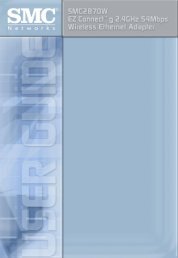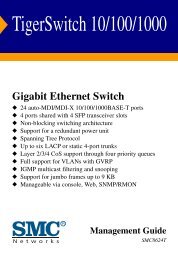TigerSwitch 10/100/1000 Installation Guide - SMC
TigerSwitch 10/100/1000 Installation Guide - SMC
TigerSwitch 10/100/1000 Installation Guide - SMC
Create successful ePaper yourself
Turn your PDF publications into a flip-book with our unique Google optimized e-Paper software.
Introduction to Switching<br />
CHAPTER 2<br />
NETWORK PLANNING<br />
A network switch allows simultaneous transmission of multiple packets via<br />
non-crossbar switching. This means that it can partition a network more<br />
efficiently than bridges or routers. The switch has, therefore, been<br />
recognized as one of the most important building blocks for today's<br />
networking technology.<br />
When performance bottlenecks are caused by congestion at the network<br />
access point (such as the network card for a high-volume file server), the<br />
device experiencing congestion (server, power user or hub) can be attached<br />
directly to a switched port. And, by using full-duplex mode, the bandwidth<br />
of the dedicated segment can be doubled to maximize throughput.<br />
When networks are based on repeater (hub) technology, the maximum<br />
distance between end stations is limited. For Ethernet, there may be up to<br />
four hubs between any pair of stations; for Fast Ethernet, the maximum is<br />
two. This is known as the hop count. However, a switch turns the hop<br />
count back to zero. So subdividing the network into smaller and more<br />
manageable segments, and linking them to the larger network by means of<br />
a switch, removes this limitation.<br />
A switch can be easily configured in any Ethernet or Fast Ethernet<br />
network to significantly boost bandwidth while using conventional cabling<br />
and network cards.<br />
2-1



